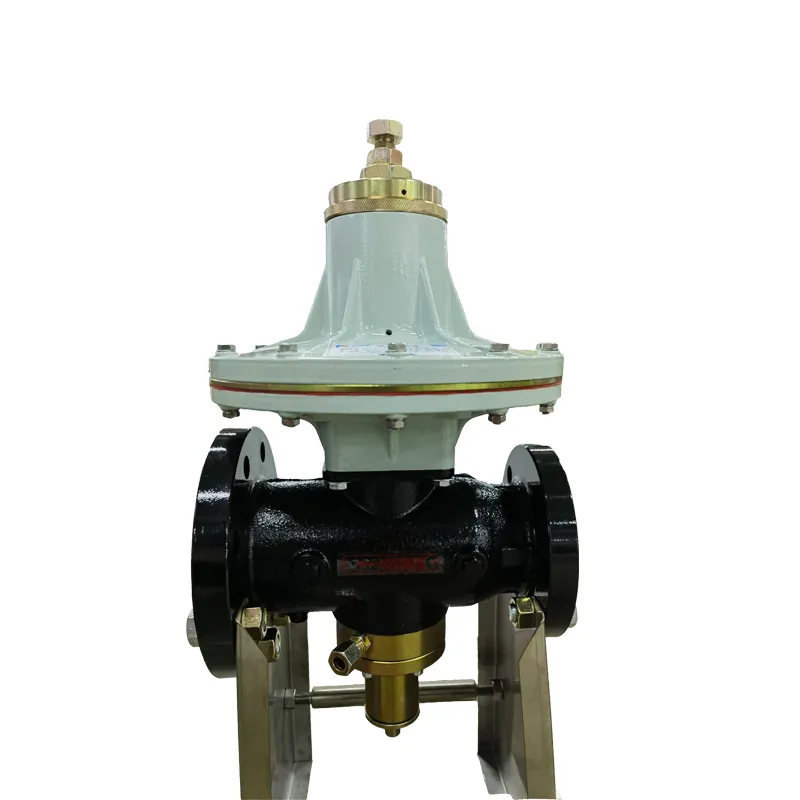
Dec . 03, 2024 16:16
Back to list
Gas Pressure Regulation Valve for Optimal System Performance and Safety Control
Understanding Gas Pressure Reduction Valves
Gas pressure reduction valves are essential components in systems that use gas as a source of energy. These valves play a critical role in regulating and controlling the pressure of the gas being supplied to various applications, ensuring safety, efficiency, and reliability in operations.
What is a Gas Pressure Reduction Valve?
A gas pressure reduction valve (PRV) is designed to reduce and maintain the pressure of gas coming from a high-pressure source to a lower, more manageable level suitable for end-use appliances and equipment. This reduction of pressure is crucial as different devices have specific pressure requirements to operate effectively and safely.
How Does a Gas Pressure Reduction Valve Work?
The basic function of a PRV involves regulating the pressure by allowing a controlled amount of gas to flow through it while restricting the flow from a high-pressure source. When gas enters the valve, a diaphragm or piston senses the downstream pressure. If the downstream pressure is below the set point, the valve opens, allowing more gas to flow through. Conversely, if the pressure exceeds the set limit, the valve partially closes, restricting the flow of gas.
The valve's design typically includes a spring-loaded mechanism that provides a constant force opposing the gas pressure. This interaction helps maintain a stable output pressure under varying demand conditions, ensuring that gas pressure remains within safe operating limits.
Applications of Gas Pressure Reduction Valves
.
1. Residential Heating Systems In homes, PRVs regulate the gas pressure supplied to furnaces, water heaters, and ovens, ensuring safe and efficient operation.
صمام تخفيض ضغط الغاز

2. Industrial Processes Many industrial facilities rely on PRVs to manage gas pressure in manufacturing processes, ensuring equipment operates within specified pressure ranges for optimal performance and safety.
3. Utility Distribution Natural gas utilities use PRVs in their distribution networks to control pressure at different points, ensuring a consistent and safe supply to customers.
4. Healthcare Facilities Medical gas systems in hospitals utilize PRVs to guarantee that gases such as oxygen and nitrous oxide are delivered at safe pressures to medical equipment.
Importance of Maintaining Proper Pressure
Maintaining the correct gas pressure is vital for several reasons
- Safety High pressure can lead to hazardous situations, including leaks, explosions, or equipment failures. PRVs help mitigate these risks by maintaining safe pressure levels.
- Efficiency Appliances and equipment operate more efficiently when supplied with gas at the correct pressure. This efficiency can lead to energy savings and reduced operating costs.
- Equipment Longevity Consistent pressure regulation prevents excessive wear and tear on equipment, extending its lifespan and reducing repair costs.
Conclusion
Gas pressure reduction valves are indispensable components in modern gas systems. Their ability to regulate pressure not only enhances safety and efficiency but also ensures compliance with regulatory standards. Whether in residential, industrial, or healthcare settings, PRVs provide vital control over gas pressure, contributing significantly to the safe and efficient operation of gas-utilizing systems. As technology evolves, the design and functionality of these valves continue to improve, supporting the ever-increasing demand for safe and reliable gas supply while fostering innovations that enhance performance and sustainability. Understanding the significance of PRVs is essential for anyone involved in the design, installation, or maintenance of gas systems.
Next:
Latest news
-
Safety Valve Spring-Loaded Design Overpressure ProtectionNewsJul.25,2025
-
Precision Voltage Regulator AC5 Accuracy Grade PerformanceNewsJul.25,2025
-
Natural Gas Pressure Regulating Skid Industrial Pipeline ApplicationsNewsJul.25,2025
-
Natural Gas Filter Stainless Steel Mesh Element DesignNewsJul.25,2025
-
Gas Pressure Regulator Valve Direct-Acting Spring-Loaded DesignNewsJul.25,2025
-
Decompression Equipment Multi-Stage Heat Exchange System DesignNewsJul.25,2025

